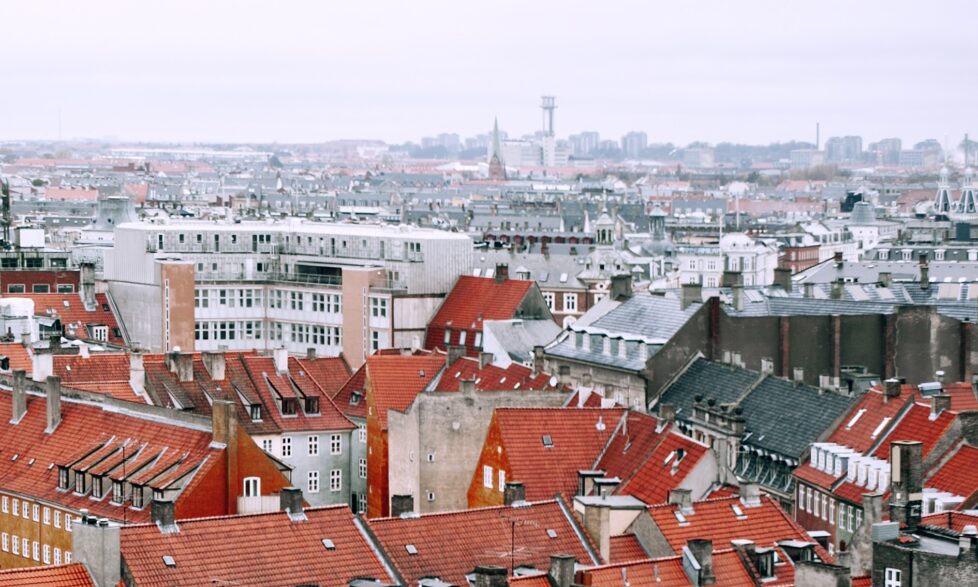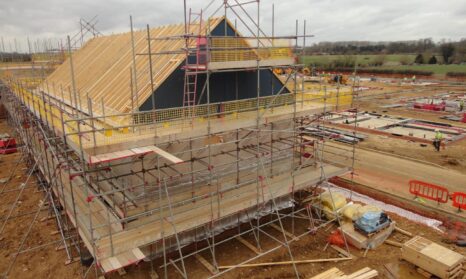Why can't we get district heating right in the UK?
Cutting carbon and costs
I should probably start by answering the burning question - what is district heating? Essentially, instead of individual gas boilers in homes, a central boiler or waste heat from a power plant is used to pipe hot water into a building for both space heating and hot water. The advantages include cost savings, higher efficiencies and the potential to use low carbon heat – key for reducing carbon emissions. In Denmark there are 440 district heating networks, with over 60% of all homes connected.
Most buildings in the UK use gas for heating, which accounts for 24% of our national carbon footprint. The national and some regional governments are promoting district heating to reduce this, with new housing developments and sites near power plants and waste heat sources as key targets. However, we have a mixed experience with district heating in this country, with poorly performing, inefficient and expensive networks. But the Danes seem to have got it sorted - their cost of heat is about 8p per unit (kWh), which is comparable with our domestic gas prices - so why can’t we get it right?
Lower temperatures and tighter regulations
Unlike the UK, Denmark never had a huge national resource of coal, oil and gas, so energy was mostly imported. The 1970s oil crisis, however, demonstrated their lack of energy security and they began investment in wind for electricity and district heating from burning waste. Copenhagen’s first network actually began in 1903 and the Greater Copenhagen network now covers almost the entire area, with over 54 km of pipes just for the main transmission grid (equivalent to high voltage electricity cables carried by pylons). Amazingly this network is run by one person in a control room.
So where are we going wrong in the UK? First, too high temperatures. The water that comes out of our gas boilers and into our radiators is 80°C. It doesn’t need to be that hot for showers or heating (if the house is well-insulated). This is a throwback to coal boilers 100+ years ago that passed onto gas boilers in the 1960s. Many schemes (including at BedZED) were designed for high temperatures and have huge losses in efficiency and are expensive to run. Since district heating is at such an early stage here, there’s no reason why we can’t jump straight to low temperature networks. The issue is, however, that our houses lose far too much heat and we currently have no coherent policy and low ambition from the government for improving our homes’ energy efficiency.
Secondly, our obsession with privatisation, low regulation and governance structures are problematic. District heating schemes are monopolies and must be non-profit (as is the law in Denmark) to ensure low prices and good governance. Although the heat generators that supply them can make a profit, there is a strict process to make sure costs are kept to a minimum.
If the district heating companies make a financial surplus, they are required to give customers a rebate. Small community-owned networks have been able to completely refurbish entire neighbourhoods this way. By contrast in the UK, the Government has a poor record on regulation.
It’s also important to mandate that power plants cannot simply dump waste heat, as most of those in the UK currently do. Electricity generation from gas, biomass etc. always produces waste heat and in Denmark it is prohibited to dump it into the atmosphere. This law accelerated the development of heat networks and now that Denmark has a surplus of electricity-generating wind power, these power plants' primary income is from heat rather than electricity.
Is there hope?
We should all be inspired by Denmark's example. Not every house should be converted, of course, but it is a viable option for some areas. While Danish networks are currently fossil fuel-reliant, they have an ambitious plan to be zero carbon by 2025 by converting coal power plants to straw, addressing issues around municipal waste incineration and using spare wind power to drive electric boilers and heat pumps. The key to all this? Long-term planning and political consensus (another thing we're not very good at in the UK!)
Can we overcome our problems? I think so. The industry has recently produced a code of practice for heat networks, specifying a lower temperature range for new networks. Existing networks such as Nottingham’s have plans to use the return feed from their high-temperature network as the input to a new low-temperature network, using the waste heat even more efficiently. The Heat Trust has also been set up to ensure customers are protected properly.
It seems unlikely that power generators will be forced to connect to heat networks. If, however, local authorities invest in district heating and boost its profile, operators will recognise the potential for an additional income source. Local authorities like Bristol and Manchester are already moving in this direction. Bioregional is also currently working with Cherwell District Council to investigate using the heat from a nearby energy-from-waste plant to heat houses in Bicester.
Community ownership of local networks could produce surpluses to retrofit houses and regenerate areas, avoiding the need for intermittently available government funding. If we did all this, we could take control of our own heat future in a way that solar panels have started to change the way we use electricity.







